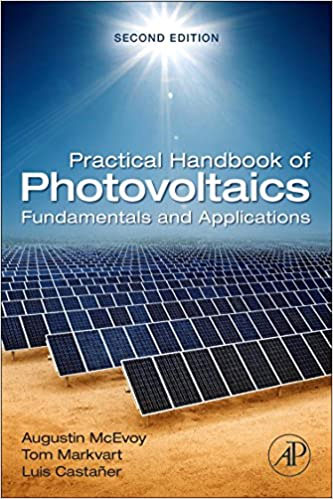Photovoltaics Handbook for Researchers
Get Your Quote FAST!
Photovoltaics Explained
How Do Photovoltaics Work? - A Simple Astronomy Lesson
Photovoltaics (PV) is one of the alternative energy sources generating a lot of attention from scientists all over the world. Many nations are trying to find ways to combat this shortage in energy so that they can continue to provide power. In the world war two timeframe photovoltaics were first used to replace steam turbines. Some nations now use photovoltaics to power entire countries.

Photovoltaics has two main approaches for generating electricity: with or without solar cells. With photovoltaics you need solar cells to convert sunlight into electricity; however you also have the option of not having them at all. In this case photovoltaics does not require direct contact with sunlight to generate electricity. Photovoltaics electricity can be generated even in places that do not receive enough sunlight to generate electricity through photovoltaics. However this is intermittent and by collecting only a certain amount of sunlight you will still produce power.
Photovoltaics electricity is not generated by the photovoltaics itself; rather it is created when the sun's photons are captured by solar cells. A photovoltaics system contains four major components: a source of raw silicon, the silicon diode, the separator, and the lens. The photovoltaics system can be assembled with four basic parts. The four main parts of a photovoltaics system are:
In the photovoltaics system the solar cells are the raw material that converts sunlight into electricity. These solar cells are made of a semiconductor material called silicon. Silicon is used because it has the highest level of electricity conversion possible. Silicon can only be found in two forms, either crystalline or noncrystalline silicon. Crystalline silicon is called pure silicon because it has been purified from impurities in the original rock form. Non crystalline silicon is mixed with silicon in order to create photovoltaics cells.
When sunlight strikes the silicon on the surface of the silicon solar cells with an electric current is formed which is later sent on to charge the silicon diode. The silicon diode creates the direct current which is later picked up by the separator. This current is then sent on to the lens and photovoltaics converter where it is converted back into direct current electricity. In order to store this excess electricity the photovoltaics converter captures it in one way or another.
Recently the Department of Energy (DOE) has invested over $30 million dollars into a program that will support the development of new advanced photovoltaics. Part of this effort involves testing different methods of capturing and storing the electrical energy of the sun. One such method involves the use of solar cells coated with sodium iodide. This coating converts the light, the sun sends into electrons, which then flow through a material that is made of tungsten. The captured electricity is then sent on to the national renewable energy laboratory for examination.
A major component of the research effort deals with the so called "photoelectric effect". Basically, the photoelectric effect is a measurement for the transfer of energy between electric charges. To demonstrate this effect to its fullest potential, it is necessary to understand the relationship between energy and light. To do this a group of researchers took images of the solar cells. Then they compared the differences in the number of photons emitted by the cells that had been photographed under specific illumination with the same amount of light emitted by the uninfected cells.
The conclusion was that the difference in photon output was caused by the difference in the paths of the electrons as they traveled between light and dark. In the case of photovoltaics this difference in path is actually used to produce electricity. The next step is for this electricity to be converted into a flow of current useful for powering our homes. So while we are learning about the basics of photovoltaics we also have another example of how this type of technology can be used. NASA has been using this technology to power the space station up for several years now. Although these solar cells were placed in space they have proved their worth far from the Earth.
